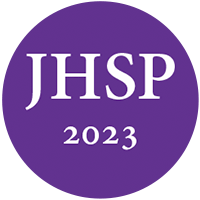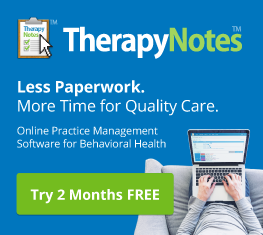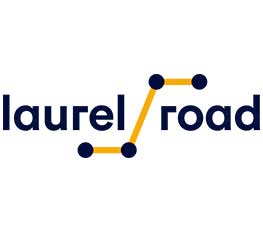The professional home for health service psychologists.
Join a community of 15,000 psychologists and trainees.
Learn it today. Apply it tomorrow.
Connecting you to what you need in your career.
Making a difference.
Russell, K. C., Gillis, H. L., & Hayes, M. (2020). Adventure Therapy Treatment for Young Adult Males Struggling with Addictions. Journal of Health Service Psychology, 46(1), 13–20. https://doi.org/10.1007/s42843-020-00003-4
Adventure therapy is the prescriptive use of adventure experiences conducted in natural settings by mental health professionals that kinesthetically engage clients on cognitive, affective, and behavioral levels. Meta-analyses, specific research on skills developed through the experience, and theoretically reasoned factors inherent in the adventure therapy experience suggest that adventure therapy is a promising treatment option for adolescents and young adults. AT treatment programs are slowly gaining traction, and more families are receiving insurance reimbursement support. The American Hospital Association recognizes adventure therapy as a viable form of treatment, and the National Uniform Billing Committee established an insurance billing code for it in July 2016. Tips for practice include allowing clients to co-construct their treatment experience, matching therapeutic intentions with adventure activities rather than prescribing uniform experiences, and having clients share their therapeutic intentions to receive feedback from their cohort group before and after the experience.
Continuing education course available at CE.NationalRegister.org
Baer, R. A., Carmody, J., & Hunsinger, M. (2012). Weekly change in mindfulness and perceived stress in a mindfulness-based stress reduction program. Journal of Clinical Psychology, 68, 755-765
Beletsky, L., & Davis, C. S. (2017). Today’s fentanyl crisis: Prohibition’s iron law, revisited. International Journal of Drug Policy, 46, 156-159.
Bettmann, J. E., Gillis, H. L., Speelman, E. A., Parry, K. J., & Case, J. M. (2016). A meta-analysis of wilderness therapy outcomes for private pay clients. Journal of Child and Family Studies, 25(9), 2659-2673.
Bowen, D. J. & Neill, J. T. (2013). A meta-analysis of adventure therapy outcomes and moderators. The Open Psychology Journal, 6, 28-53.
Gabrielsen, L. E., Fernee, C. A., Aasen G. O., & Eskedal, L. T. (2016). Why randomized trials are challenging within adventure therapy research: Lessons learned in Norway. Journal of Experiential Education, 39, 1 5-14
Gass, Gillis, & Russell (2019) Adventure therapy: Theory, research and practice (2nd Ed.). New York: Routledge Mental Health.
Gillis, H.L., Speelman, E. Linville, N. Bailey, E., Kalle, A. Oglesbee, N., Sandlin, J., Thompson, L., Jensen, J. (2015). Meta-analysis of treatment outcomes measured by the Y-OQ and Y-OQ-SR comparing wilderness and non-wilderness treatment programs. Child & Youth Care Forum, 45(6), 851-863.
Goodman, J. D., McKay, J. R., & DePhilippis, D. (2013). Progress monitoring in mental health and addiction treatment: A means of improving care. Professional Psychology: Research and Practice, 44(4), 231-246. http://dx.doi.org/10.1037/a0032605
Lambert, M.J. (2017). Implementing routine outcome monitoring (ROM) in clinical practice. Journal of Health Service Psychology, 43, 55-59.
Lambert, M. J., & Finch, A. E. (1999). The Outcome Questionnaire. In M. E. Maruish (Ed.), The use of psychological testing for treatment planning and outcomes assessment (2nd ed.) (pp. 831-869). Mahwah, NJ: Lawrence Erlbaum Associates.
Lander, L., Howsare, J., & Byrne, M. (2013). The impact of substance use disorders on families and children: from theory to practice. Social Work in Public Health, 28(3-4), 194–205. https://doi.org/10.1080/19371918.2013.759005.
Mandas, P., Argo, K., Rose, H, Zelenik, T, Wetherington, A., Brogden, M.C., Cook, G. Gillis, H. L., & Russell, K.C. (2019). Differences between opioid and non-opioid users during and after Outdoor Behavioral Treatment. Journal of Therapeutic Schools and Programs, 11(1), 105-119
Mattick, R. P., Ali, R., White, J. M., O’brien, S., Wolk, S., & Danz, C. (2003). Buprenorphine versus methadone maintenance therapy: A randomized double‐blind trial with 405 opioid‐dependent patients. Addiction, 98(4), 441-452.
Mayet, S., Farrell, M., Ferri, M., Amato, L., & Davoli, M. (2004). Psychosocial treatment for opiate abuse and dependence. Cochrane Database of Systematic Reviews, 4. https://doi.org/10.1002/14651858.CD004330.pub2
Russell, K. C., & Gillis, H. L. (2017). The Adventure Therapy Experience Scale (ATES): The psychometric properties of a scale to measure the unique factors moderating an adventure therapy experience. Journal of Experiential Education, 40, 2, 135-152. https://doi.org/10.1177%2F1053825917690541
Russell, K. C., Gillis, H. L., Kivlighan, D. M. (2017). Process factors explaining psychosocial outcomes in adventure therapy. Psychotherapy, 54, 3, 273-280. http://dx.doi.org/10.1037/pst0000131
Russell, K. C., Gillis, H. L., & Heppner, W. (2015). An Examination of Mindfulness-Based Experiences through Adventure in Substance Use Disorder Treatment for Young Adult Males: a Pilot Study. Mindfulness, 7(2), 320-328. https://doi.org/10.1007/s12671-015-0441-4
Russell, K. C. & Farnum, J. (2004). A concurrent model of the wilderness therapy process. Journal of Adventure Education and Outdoor Learning, 4, 39-55.
Shapiro, S.L., Carlson, L.E., Astin, J.A. and Freedman, B. (2006). Mechanisms of mindfulness. Journal of Clinical Psychology, 62, 373-386.
Shimokawa, K., Lambert, M. J., & Smart, D. W. (2010). Enhancing treatment outcome of patients at risk of treatment failure: meta-analytic and mega-analytic review of a psychotherapy quality assurance system. Journal of Consulting and Clinical Psychology, 78(3), 298–311. http://doi.org/10.1037/a0019247
Substance Abuse and Mental Health Services Administration (2019). Reports and Detailed Tables from the 2018 National Survey on Drug Use and Health (NSDUH). https://www.samhsa.gov/data/nsduh/reports-detailed-tables-2018-NSDUH
Sokol, R., LaVertu, A. E., Morrill, D., Albanese, C., & Schuman-Olivier, Z. (2018). Group-based treatment of opioid use disorder with buprenorphine: A systematic review. Journal of Substance Abuse Treatment, 84, 78-87.
Tasca, G. A., Cabrera, C., Kristjansson, E., MacNair-Semands, R., Joyce, A. S., & Ogrodniczuk, J. S. (2016). The therapeutic factor inventory-8: Using item response theory to create a brief scale for continuous process monitoring for group psychotherapy. Psychotherapy Research, 26(2), 131-145.
Tucker, A. R., Combs, K. M., Bettmann, J. E., Chang, T. H., Graham, S., Hoag, M., & Tatum, C. (2018). Longitudinal outcomes for youth transported to wilderness therapy programs. Research on Social Work Practice, 28(4), 438-451.
Copyright © 2025 All rights reserved. National Register of Health Service Psychologists








